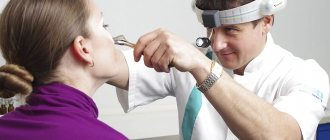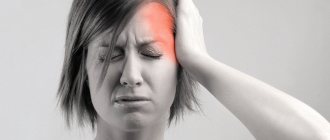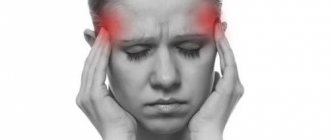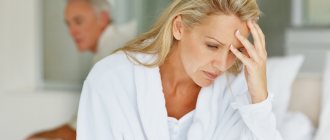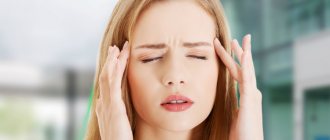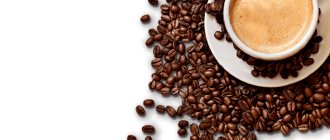There are 6 types of headaches:
- Muscle tension
- Vascular
- Neuralgic
- Liquorodynamic
- Functional or psychalgia
- Mixed
Here is an interesting plate based on statistical data from outpatient visits to a pediatric neurologist at our clinic.
Please note that complaints of headaches appear in children in preschool age, with a subsequent increase.
| Age/ Nosology | 0-1 year | 1-3 years | 4-7 years | 8-10 years | 11-14 years old | 15-17 years old |
| Headaches, unspecified | 7% | 9% | 16% | 18% | ||
| Tension type headaches | 3% | 12% | 18% | 24% | ||
| Vascular headache | 0.3% | 0.8% | 2% | 10% | 18% | |
| Migraine | 1% | 1% | 1% | 1% | ||
| Functional, including against the background of cerebrovascular disease | 2% | 4% | 6% | 9% |
Tension type headaches
(psycho-emotional or muscle pain) occur when the child’s psycho-emotional load does not match his capabilities (emotional-volitional or cognitive), which in turn increases the tone of the “emotional” muscles that are attached to the periosteum of the skull. This muscle pain is considered a headache. Now it becomes clear why this type of headache is characteristic of the age at which preparation for school begins, and increases exponentially by the time of passing the Unified State Exam.
Vascular headache
This is pain in response to stretching or inflammation of the vascular wall. There can be many reasons, from vascular abnormalities to banal vascular dystonia. Migraine is also a type of vascular headache, has characteristic clinical manifestations, and its cause is aseptic inflammation of the vascular wall.
Neuralgic headache
occurs when there is pressure on the nerve trunk, its branch or node, and after compression there is ischemia and pain. The reason for this may be post-traumatic or inflammatory swelling along the nerve, as well as any space-occupying formation. Neuralgic headache can also be of central origin, as a result of dysfunction of the nociceptive and antinociceptive systems of the brain.
In the occurrence of liquorodynamic headache
the main role is played by increased intracranial pressure. Intracranial pressure may increase with the appearance of additional formations, both liquid and solid, in the cranial cavity, which in turn compresses and/or displaces the meninges, blood vessels and nerves, causing pain. This may be a tumor, inflammation of the meninges of the brain (meningitis). Intracranial hypertension can also occur as a result of the appearance of any neoplasm that obstructs the outflow of cerebrospinal fluid from the cranial cavity.
Functional headache
most often has a psychogenic mechanism.
Mixed form, has mixed origin.
We have analyzed six types of headaches, which, in turn, have different causes.
To figure out what exactly is causing your child’s headaches, you need to contact a pediatric neurologist, who, after a neurological examination, will decide whether you need consultation with a related specialist and may prescribe additional examination methods.
In the children's building of the clinic
You will be able to get advice from experienced specialists, as well as conduct all the necessary examinations to identify the causes of headaches in your child.
Information prepared for you by:
Razina Elena Evgenievna – pediatric neurologist, epileptologist, functional diagnostics doctor, leading specialist of the clinic. Conducts a reception in the Children's building on Usachev.
Comments
Website (1) Facebook (0) Odnoklassniki (0)
1
10.03.2020, 02:34
I have been experiencing migraine attacks for the past five years. The first time everything was so bad that I thought I was having a stroke. But she could think, so she dismissed the idea. In fact, it all started with a pain in the temples, which had happened before. Then the pain flared up, moved only in one direction, it began to pound in one temple, then the pain became very strong and spread over the entire cheek. And then my neck, arm, and, as it were, the whole half of my body began to go numb. Then I thought it was a stroke. The girls at work called an ambulance, took me to neurology, and completely examined me. She lay there for more than a week. But nothing serious was found, as the doctor said. It was a migraine attack. They prescribed various medications and explained when to take them. The attacks began to recur once every one and a half to two months, and were very similar. When I tried to cope with the pills that they advised me in the hospital, the result was zero. The attack passed the next day, either treat it or not. And after the attack and the pills, I walked around like a zombie for a day. I was puzzled by finding a clinic where they would actually help. I found the Resonance chronomedicine clinic in Kyiv. They promised that they would help within a year. I have been treated for four months and things are already much better. And after six or seven months the attacks stopped altogether. More than two years have passed and I have never thought about migraines again.
—Igornej
There are no comments yet
There are no comments yet
Dear patients!
Headache is a reflex mechanism that performs a protective, protective function, consisting of brain structures that perceive painful stimuli and structures that analyze these stimuli.
That headaches in children are a very common phenomenon and firmly rank second among painful conditions after abdominal pain. They affect children’s mood, behavior, performance, learning and further professional guidance. Complaints about headaches in children appear at the age of 4-5 years; it is by this age that the child learns to differentiate, localize and correctly describe his pain sensations. However, this does not mean that younger children do not experience headaches. At the age of up to 3 years, pain can be indirectly judged by the child’s behavior (increased excitability, unreasonable crying, sleep disturbance, hyperactivity, and so on).
There were 2 peaks in the increase in the frequency of headaches after 3 years of life in children:
1. In children at 7 years old (it is associated with first class stress);
2. Adolescent at 13-15 years old (puberty).
Timely diagnosis and treatment of episodic headaches in early childhood prevents its development into a chronic form in adolescents and adults.
In our country, episodic headaches are one of the most common complaints among schoolchildren and adolescents. Among children 3-5 years old, the prevalence of headaches is about 3%, among children 6 years old it is already 15%, and among schoolchildren it is up to 72% and they are associated with increased mental stress. Moreover, 90% of all types of headaches are tension headaches (TTH), a collective concept.
Etiology and provoking factors. Two etiological reasons can be distinguished:
1.Organic (craniocerebral and spinal injuries, meningitis, epilepsy, cancer, ophthalmological or ENT pathology).
2. Functional (birth injury of the cervical spine, vegetative-vascular dystonia, etc.).
Provoking factors include:
1. psychosocial (lessons in a stuffy room, physical and mental stress, relationships in the family and school, prolonged sports overload without changing direction, prolonged viewing of TV).
2. prolonged muscle tension in anti-physiological positions (uncomfortable desk; desk that does not correspond to height; uncomfortable position during sleep).
3. meteorological conditions (weather change, strong wind).
4. excessive or prolonged use of analgesics (painful menstruation in girls).
5.uncorrected visual impairment (myopia, etc.).
6. errors in organizing the daily routine (no or insufficiently long and restful daytime sleep, forced fasting).
Tension headache clinic, because it is the most common and includes the most common causes and mechanisms of occurrence (muscular, vascular and spinal pathology). Depending on the leading mechanism, one or another complaint will prevail.
Tension headaches are often diffuse in nature . The nature of the pain is aching, pressing, squeezing, and most often occurs in the afternoon. It is provoked by overwork at school, stress and meteorological factors. The pain lasts from one to several hours, often goes away on its own when changing activities, after rest, or a short sleep. Sometimes, headache attacks are accompanied by darkening of the eyes or one-time vomiting. TTH is more often localized in the frontal and frontotemporal regions, less often in the parietal regions (children indicate the place of pain with their palm). Most children with tension-type headache have various manifestations of the pathology of the autonomic nervous system: sweaty palms, palpitations, stabbing pain in the heart, abdominal pain. Features of HDN in spinal pathology. The child complains of shooting headaches in the cervical-occipital region. It intensifies with awkward rapid movements of the head and neck, coughing and sneezing. Patients try to keep their head in a fixed position. There is no effect from the use of painkillers, but physiotherapy and massage of the collar area give good results.
Features of muscle tension
1. Children complain of a squeezing, aching headache throughout the day.
2. Occurs in children during prolonged emotional stress, less often after physical activity.
3. Dependence on the position of the head and neck during lessons (in school-age children), sometimes worsens after sleep and a long fixed position of the head.
4. Muscle tension headache is characterized by constancy and monotony, and is localized in the frontotemporal or occipito-cervical regions. It is caused by prolonged tension of the muscles of the soft integument of the head and vascular spasm.
5. Persistent headaches due to muscle tension also occur after a head injury and are combined with increased irritability and fatigue.
Features of tension-type headache associated with spasm of the vertebral artery.
Pain in the cervical-occipital region can be caused by pressure from the vertebrae or muscles on the vertebral artery. The pain has different characteristics - from shooting to throbbing. Often the pain radiates to half the head, accompanied by dizziness, tinnitus, “simple” visual disturbances, fainting, etc. The most severe form of dyscirculatory disorders may be acute cerebrovascular accident - pre-stroke conditions.
Features of tension-type headache associated with vegetative-vascular dystonia (VSD)
In some cases, autonomic disorders are predominantly sympathetic or parasympathetic in nature. When sympathetic reactions predominate, pale and dry skin, dilated pupils, and sometimes “bulging” eyes are noted.
The extremities are cold, the body temperature is unstable. Reduced tolerance to heat, stuffiness, noise, bright light, coffee. Muscle tremors, palpitations, and constipation may occur. Body weight is often reduced with a good appetite. Sleep is disturbed. Physical activity is increased, performance is better in the evening. The ability to remember and concentrate is reduced.
The predominance of parasympathetic reactions is characterized by a feeling of hot flashes and redness of the skin; increased humidity of the palms and feet, poor tolerance to cold. Dizziness, a feeling of “incompleteness of inspiration,” nausea, periodic pain in the upper abdomen, increased gas formation, and diarrhea may be observed. Children tend to gain weight (often with decreased appetite), are apathetic, have little initiative, and are fearful. Increased sleepiness, slower transition to active wakefulness in the morning. Sometimes fainting occurs, allergic reactions are often observed in children. Children have reduced tolerance to mental and physical stress, against the background of which an attack occurs.
Diagnostics:
1. Ultrasound of the vessels of the neck and head (duplexography) - spasm of the artery supplying the brain is determined. This spasm is caused by pathology of the vertebral arteries (developmental anomaly, impact on the artery by the vertebrae or muscles).
2. X-ray of the cervical spine - instability of the cervical spine and/or signs of osteochondrosis are determined.
3. Nuclear magnetic resonance imaging - performed if a herniated disc is suspected (extremely rare in pediatric practice) or if there is no pathology in the conclusion of ultrasound and radiography.
4.If necessary, an examination of the fundus and visual acuity is carried out.
Treatment and prevention. Treatment of tension-type headache.
1. Treatment of episodic tension-type headaches - implies preventive measures: daily routine, proper sleep, comfortable working conditions. Non-pharmacological treatment methods - massage of the head and collar area, physical therapy, acupuncture, manual therapy, hydrogen sulfide or sea baths, physiotherapy, psychotherapy (with the aim of increasing social adaptation). For headaches, you can recommend a single dose of analgesics - paracetamol, etc.
2. Treatment of chronic tension headaches - eleutherococcus, lemongrass (add to tea in the morning). In general, tea with lemon is one of the means of raising the tone of a child’s life. Ascorbic acid is also useful in this case, as well as sedatives (valerian, motherwort, peony). Chronic tension headaches, in addition to the standard set of procedures for episodic headaches, almost necessarily involve the prescription of vascular medications and, very often, anti-depressants. The course of treatment lasts at least 3-4 months.
Prevention requires a reasonable alternation of work and rest for the student, a choice of additional activities and hobbies that do not take up the time allotted for rest. The appearance of headaches in such cases indicates a state of fatigue of the nervous system. In this case, there is no need to resort to taking painkillers, but on the contrary, the entire complex of therapeutic measures should be of a general strengthening nature. Here you can use physical therapy exercises in the open air, water procedures (more details in the article “On the benefits of hydrogen sulfide baths”), which should begin with morning rubdowns; massage and physiotherapy, varied fortified diet;
in winter, it is recommended to take additional multivitamins 1-2 tablets per day.
According to statistical studies, the frequency of headaches in children (in particular tension pain) is steadily increasing.
And this is understandable; modern psychosocial conditions place increasingly higher demands on the nervous system of children. There are currently no proven and applied methods for alternating mental and physical stress in schools. Therefore, if a child complains of headaches, parents should take appropriate action. In this case, the child should be examined by a neurologist or rehabilitation specialist. If necessary, you need to undergo further examination by an ophthalmologist and an otolaryngologist.
Currently, there are many schemes, techniques, and methods for treating headaches.
Their degree of effectiveness varies. Some of them are entirely medicinal, others completely deny drug therapy and offer to solve the problem using alternative (osteopathic and physiofunctional) methods.
Various methods are used for prevention: (physiotherapeutic, reflexology, manual, osteopathic, medicinal) there are a lot of techniques and treatment methods.
You need to consult a doctor in time and give your child an accurate diagnosis.
A healthy child is yours – peace of mind, joy in the family.
Nausea - why? Possible causes of nausea
Diseases in which nausea is observed may relate to pathologies of the digestive, nervous, endocrine, cardiovascular and reproductive systems. Most often, nausea is a symptom of diseases of the gastrointestinal tract - both chronic (for example, gastritis, peptic ulcer, duodenitis, enterocolitis, cholelithiasis, pancreatitis, hepatitis, etc.) and acute (peritonitis, appendicitis, acute pancreatitis, acute cholecystitis and etc.) requiring immediate medical intervention.
Nausea can also be caused by reasons such as:
- pregnancy (morning sickness is often observed during the first trimester. It is caused by hormonal changes occurring in the body of the expectant mother);
- side effects of medications;
- toxic substances (poisoning);
- psychogenic causes (anxiety, severe fear, hysteria);
- overheating (hyperthermia), sunstroke.
Nausea at night
Another common complaint is nausea at night . A sleeping person remains in the same position for a long time; the normal functioning of the body's systems is weakened. This leads to the fact that the feeling of discomfort accumulates, and, in the presence of pathological reasons, when you wake up, you can feel a strong attack of nausea.
Such attacks of nausea (in the morning or at night) can occur during pregnancy and be a consequence of toxicosis. Another cause may be hypothyroidism, a disease of the thyroid gland. Cardiovascular diseases (arterial hypertension, vegetative-vascular dystonia) can also cause nausea in the morning or at night. A common cause is diseases of the gastrointestinal tract (primarily gastritis and cholecystitis). In this case, nausea is usually accompanied by heartburn, pain and burning in the abdomen.
Principles of treatment
In the vast majority of cases, you should normalize your diet and daily routine before prescribing medications to your child. Children need to be taught to take walks in the fresh air, to have an active lifestyle and, of course, to go to bed on time. Emotionally labile children can benefit from the gentle intervention of a psychotherapist, who will choose the best way for them to work on themselves and teach them simple relaxation techniques. Sometimes it is advisable to prescribe physiotherapeutic procedures, especially after head injuries or migraine attacks. As a rule, this is transcranial micropolarization or the Gerasimov apparatus. If a child is diagnosed with VSD, acupuncture and massage methods can help him.
Do you like the material?
Don't forget to subscribe to our Yandex.Zen!
Comments to the article 0
Headache in children and sleep disorders
A person cannot live without rest. The lack of adequate sleep has a particularly negative impact on a child, whose intellectual and physical abilities decrease and school performance worsens with the slightest lack of sleep. With chronic insomnia in children, other problems may arise, for example, frequent infectious diseases, depressive disorders.
Headache in children can cause sleep disturbances, especially insomnia. Prescribing sleeping pills in such situations will not solve the problem in any way, and may even worsen the condition. In addition, many sleeping pills are simply contraindicated for children, especially for those who have not yet reached the age of 12.
At the Rehabilitation Clinic in Khamovniki there is a Sleep Medicine Center, where insomnia is diagnosed and treated. If you suspect that the reason for your child's poor sleep lies in a headache, you can take him to the sleep department. The child will be prescribed all the necessary examinations, given recommendations for treatment, and, if necessary, referred to a specialized institution that deals exclusively with children's problems. Sign up for a consultation by phone: +7.


